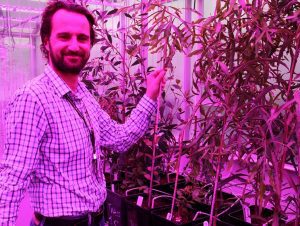 Around 100 plant species have been identified as the champions of climate change under a $10 million, five-year joint research project.
Around 100 plant species have been identified as the champions of climate change under a $10 million, five-year joint research project.
Funded under the Hort Innovation Green Cities Fund, and in partnership with Macquarie University, Western Sydney University (WSU) and the NSW office of heritage and the environment, the Which Plant Where Project aims to improve future planning outcomes to achieve greater environmental sustainability in urban green spaces.
The project initially saw more than 13,000 individual plants and over 500 popularly planted tree and plant species put through rigorous testing and bioclimatic models to see how each would perform in the years 2030, 2050 and 2070.
Preliminary results saw many of the more popular currently planted species fail to make the cut.
Climate suitability maps have already been developed for the five most densely populated Australian cities, with researchers hoping to culminate their findings in an interactive online database, with advice on how well a specific species can withstand the environmental changes forecasted for the next 50 years.
Hort Innovation general manager for research and development David Moore said, once live, the online tool would create market opportunities for growers through identifying native and exotic species resilient to climate change and enable urban planners to make more informed decisions around which species to plant to future-proof urban landscapes.
“This project will benefit growers by ensuring that plants are better matched to appropriate climatic conditions around Australia, improving plant survival and sales,” he said.
“It will also benefit consumers and government stakeholders alike by allowing them to make more informed purchasing decisions, taking into consideration a plant or species best performance in varied urban environments based on tried and tested scientific research.
“As a community at large, all Australians will benefit through more liveable environments through greener cities.”

WSU chief investigator Professor David Ellsworth said conclusive results wouldn’t be available until the project was finalised, but they were halfway through glasshouse experiments with over 50 species and more than 600 individual plants already put through testing.
“During the glasshouse experiments we exposed half of the plants to drought by gradually decreasing soil water content over several weeks, and then all of the plants were exposed to a 6-day heat wave, reaching temperatures of up to 41 degrees,” he said.
“We then measured individual plants to record stress indicators, plant performance and wilting point to determine which species were resilient and which were vulnerable to heat and drought.
“What we found was that some of the more popular plants would not cope as climate change intensified. This means that government and growers alike will have to better consider what plants they are investing in when growing and designing green spaces to achieve optimum sustainability.”
This project is being delivered in line with the 202020Vision – a collaborative initiative working to make urban areas 20 per cent greener for the benefit of all Australians.
